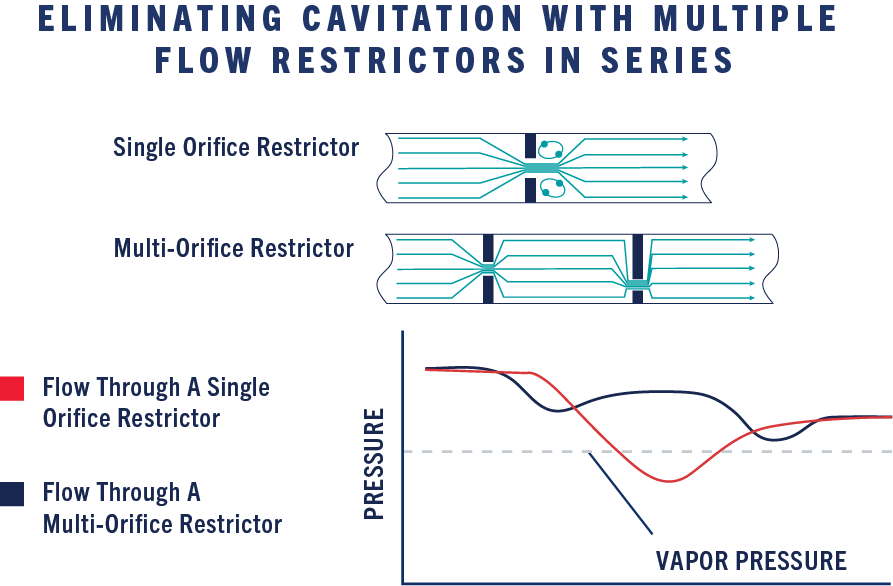Liquid flowing through any orifice will cavitate whenever its velocity causes the pressure in the throat of the orifice to drop below the vapor pressure of the flowing liquid. If the velocity is high enough – even though there may be a high supply pressure and a high back pressure on the orifice – there will be a subsequent lowering of the pressure in the throat of the orifice and the possibility of cavitation.
The effects of cavitation are choked flow and erosion – both of which are undesirable. To mitigate cavitation, the throat pressure must be maintained, either by:
1. Applying sufficiently high back pressure, or
2. Reducing the velocity of the liquid as it flows through a restrictor.
The use of Lee multi-orifice restrictors (including the Bender Jet, Axial Visco Jet®, JEVA, and Visco Jet® restrictors) can significantly reduce the possibility of cavitation. Their unique designs allow the total pressure drop to be divided across each orifice, reducing throat velocity and increasing back pressure relative to the pressure drop across each orifice. The images below show how these types of restrictors create much smaller pressure drops across each of the orifices; and the individual drops are never below the vapor pressure. Therefore, the use of multi-orifice restrictors can significantly reduce the possibility of caviation.

It is recommended that Lee multi-orifice restrictors be considered whenever high pressure drops and low back pressures are required. Contact your local Technical Sales Engineer to find the ideal solution for your application. The use of multi-orifice restrictors can significantly reduce the possibility of cavitation.
Always verify flow calculations by experiment.
*There are many parameters to consider when determining V-Factor. Click here for more information.